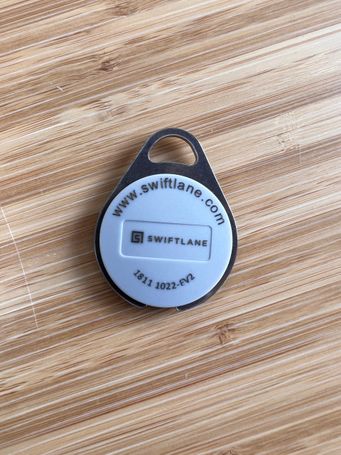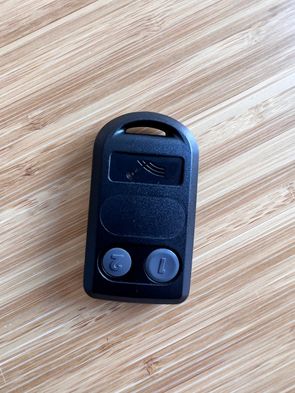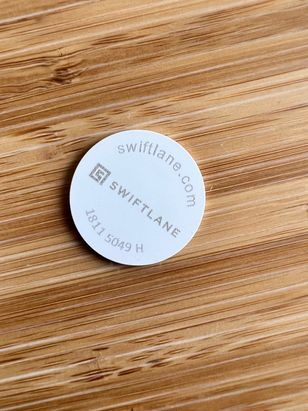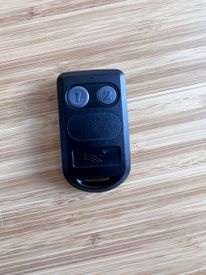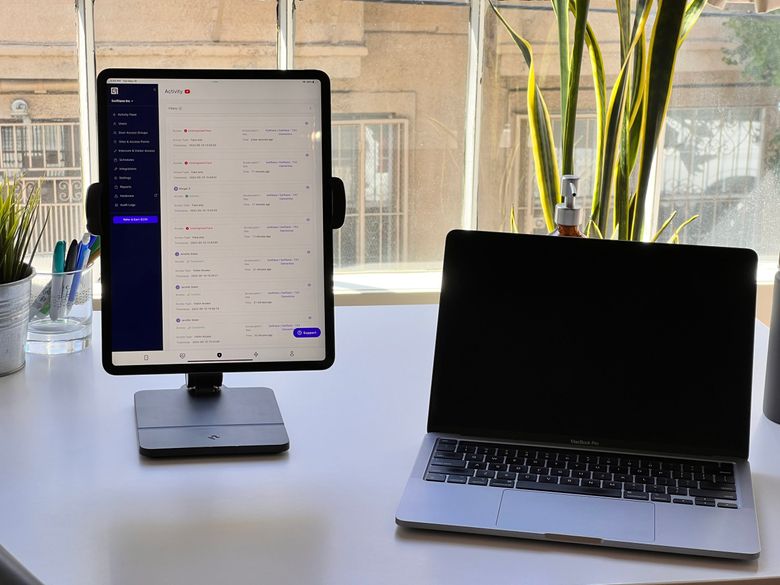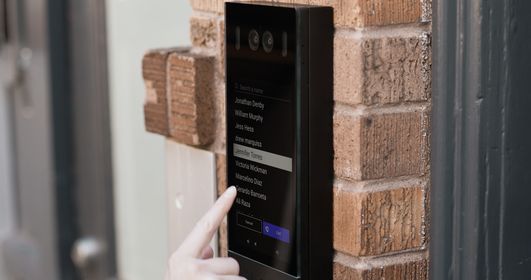Hello, I am Saurabh Bajaj, CEO of Swiftlane, an access control company in the US. Chances are that you are either a building owner, property manager or security professional looking to learn more about key fob systems, or buy one. My goal with this blog is to primarily help apartment owners and property managers make sense of the various types of key fob systems, difference between them, and how to evaluate new systems. Don’t miss the section on risks around buying key fob systems.
This is a long post, it might take you 5 min to read through the whole thing. But if you stay with me, I hope that you will find it informative in your quest to answer questions around key fob systems. You can drop me a note on Linkedin or in the comments below, if you have any further questions!
This blog will be useful if you are either:
- Looking to get an overview of how key fobs work
- Replace your key fobs or the key fob system
- Make copies of your key fobs
- You are looking to replace or buy a new key fob system for your apartment or community
- Looking for doors with key fob readers built-in
- Need help choosing a key fob system vendor for your apartment community
Table of contents
- What’s a key fob?
- Selecting a key fob system
- Access Control Software
- Where to buy key fobs?
- Programming key fobs
- Key fob companies
Suggest posts:
- Key Fob Entry System for Commercial Buildings
- Key Fob Entry Systems – A Complete Guide
- The Multifamily Buyer’s Guide to Intercom Systems
What’s a key fob?
Key fob and key card is an electronic key – you can use them to open doors. Each key fob stores a unique number inside it that can be wirelessly transmitted to the card reader when it comes near the device.
What is an apartment key fob?
An apartment key fob is a physical Access Control credential that can provide entry to the common areas of an apartment or condominium building. long range apartment key fobs could also be utilized to open garage and vehicle entry doors by clicking a button when you are driving a vehicle and entering the building
Most key fobs don’t have any built-in battery. Ever wonder how they communicate electronically with the reader?
Skip this section if you are not interested in the technical details.
If you have ever used a wireless phone charger, the technology is very similar and has been used in key fobs for a long time. There is a copper wire inside a key fob, connected to a very small computer. This card reader is creating a short range radio frequency field. When the fob comes close to the reader, the copper coil on both sides energize, and convert it into electricity. This electricity power a mini computer chip inside the fob reader. This starts getting power and transmits a unique number stored inside the key fob. The reader is now able to read the number, as your identity credential. The reader’s access control software recognizes the number as an authorized entry, and releases the door lock! If you are more interested in details of this, wikipedia has a good article on how key fobs work.
Active key fobs – often used for garage clickers
There are alternative fobs for doors, that come with a battery inside – active key fobs. These take tiny batteries inside them. Generally, the active fobs are used for garage clickers, because they need to be operated from far away, and require a power source to transmit the number to the receiver far away.
Some companies combine a short range and long range garage clicker into a single unit. Typically, these units cost between $30-$40 each (they are expensive!)
Encrypted vs Prox Key fobs
You might hear confusing technical terms Desfire EV2 encryption, 13.56 Mhz frequency or Mifare technology, when evaluating key cards and fobs. These refer to various aspects of the key fob technology. Generally speaking these are encrypted key cards and fobs, that are more secure. You cannot clone them using a cloning device, due to a security chip inside.
Encrypted cards were invented because it’s too easy to clone a regular prox card. Prox cards go by various jargons too – 125 Khz cards, 26-bit prox, proximity fobs, etc. These all refer to the popular older card formats. The proximity fobs can be cloned easily in a hardware store, or using a cheap cloner from Amazon. You can buy one for under $20 easily. Here are some card cloners online on Amazon.
Watch how to clone prox key fobs using a cheap card cloner
Selecting an apartment key fob system
Okay, let’s discuss the full key fob and card systems next. This would be helpful if you are looking for a new system so that you can make an informed decision.
Choosing the type of key fob
While choosing a key fob type, you can consider the following pros and cons of different key fob types.
Traditional Proximity Fob (125 Khz)
- Cheaper: The unencrypted fobs are widely available and compatible with most systems. Hence they are also the cheapest form of credential. If you are trying to minimize costs, these will be the cheapest
- Better for Retrofits: Already have hundreds of tenants in a building with existing fobs? They likely have the prox type fob. In retrofits, it would be very expensive to give a new fob to every person, and hence the traditional fobs might be a good choice to avoid large costs of replacement
- Existing readers: If you are looking to continue using the current readers and access control system, you may have to stick to traditional prox fobs.
Encrypted Key Fobs
- Cannot be cloned, hence more secure
- Residents cannot make numerous copies and take it with them or give it to their Airbnb guests
- Malicious use can be prevented since the only way to get these would be from the property management team
Key tags
Key tags are just different in design. They are smaller, and flatter and you can stick them to the back of your phone. They come in both encrypted and prox technology
Garage Clickers
- Active clickers that are needed to open garage or parking gates. Expensive, often $30-$40. You could pass that cost over to the apartment tenants
- These come in various shared or proprietary wireless formats
- Require changing batteries if they run out of juice
Vehicle tags
- Vehicle tags are an alternative to the garage clicker
- They are much cheaper, ranging from $6 to $12
- They attach to the car’s windshield and work passively. No need to change batteries
Dual Frequency Fobs
Certain fobs can have both short range door access signal, and the long range parking gate access signal, in one. This reduces the number of things you need to carry around.
Key Cards
Key cards are just fobs that look like a card. There is no other difference. These are just more popular in the office. Apartments and condos overwhelmingly prefer key fobs. Here is my personal theory on why offices use key cards and residential buildings use fobs:
Offices: Office security teams want to see a physical card on a lanyard, always visible. This allows security guards to visually verify employees during a patrol. It’s an outdated practice these days.
Apartment: Fobs are just smaller, less intrusive, and easy to carry in your pocket with your keys. So it makes sense as a form of access over cards in non corporate environments.
Card Readers
The card readers will be the primary device you are interacting with. What type of card reader do you need?
Prox vs Encrypted Readers
Your choice of the fob type will directly affect the reader you can use. Readers come with support for either prox or encrypted fobs, or both. Prox readers are the cheapest. Encrypted readers are a bit more, and dual readers are the most expensive of all three.
Access Control Software
It’s the brain of your key card system. It is likely running on an outdated windows computer, inside the leasing office, with a user interface that hasn’t changed since Y2K. Or it might may be a cloud based system, which means the computers are floating in the clouds. Just kidding, it simply means that you can manage the system using a web browser, that connects to a remote server.
On premise access management systems
On premise systems have been the standard for multiple decade, until recently. There is a strong move towards to modern cloud based systems across the whole security industry. It’s due to the following reasons:
- On premise systems cannot be managed remotely. You have to be onsite and cannot make changes remotely
- Time consuming and lack of frequent software updates – no wonder they are still look like the software was built in the 90s
- You may lose all data if the system crashes or the hardware gets corrupted etc
- Requires technically trained staff – which can be a burden on onsite teams
Cloud-based access management systems
Cloud-based access management systems are newer, more intuitive versions of the same technology.
- They can be managed from anywhere, using just a web browser or a mobile app
- Designed with simplicity and ease of use in mind – for non technical staff members and onsite teams
- Can connect to property management systems to fully automate user move-ins and move-outs
- Data is automatically backed up on multiple servers
- Software updates are frequent and automatic, no need to “insert a USB or CD” (it is widespread still)
Cloud-based system often have a monthly fee associated with it. Your first reaction may be to avoid adding any opex to your NOI, please resist that feeling. The cloud hosting fees are nominal compared to the operational burden and man hours your teams will spend in managing a legacy on premise system.
Where to buy key fob systems?
You can buy fobs from hundreds of sites and local businesses. If you are buying a prox fob, you could even buy it online on Amazon. 26-bit format prox cards are the most common.
For encrypted fobs, you must purchase the correct one, otherwise, it won’t work with your reader. The encryption keys need to match with the rest of the key card system. It may be different even within the same provider.
I recommend talking to a security integrator or reach out to us to get advise on the right key fob for your building.
Programming key fobs
This depends completely on the access control manufacturer you are using for your building. Contact the manufacturer or search online for programming steps for that specific manufacturer.
Key fob companies
There are many companies selling key fob and key fob access control systems. You can go to google to search for local access control companies to pull up some search results. There are two types of companies involved in buying a key fob system:
- Installer / Integrator
- Manufacturer
Companies like Swiftlane are a manufacturer of the key fob access control system. We are a technology and security hardware company, focussed on building the end-to-end product for security systems for apartments. Our goal is to create best in class products that work reliably and increase safety and convenience. Companies like Swiftlane are incentivized to create best in class product and customer service so that people will trust them and buy them.
The local security integrator or installer carries many manufacturer brands. They may sell dozens of different access control, camera, and alarm systems. Integrators will often sell the hardware and software to you, and provide installation and ongoing ground support. Local integrators are experts at understanding installation, carrying and suggesting the right brands, having licensed technicians, and providing on the ground ongoing support.
Further below, I will try to give you advice on how to evaluate manufacturers and security integrators.
Access control manufacturers buying risks
While there is so much innovation happening in key fob access control systems, there are also hundreds of companies with very bad product experiences. These are some risks you will come across while evaluating security manufacturers:
- Brochureware: Beautiful marketing material. Unimpressive execution. I have coined it as brochureware (instead of software or hardware). This is far too common in security industry. That is because it’s easy to assemble a bunch of third party products and make a security company around it. But it’s hard to deliver on a great product experience which requires going hard work and commitment to customer’s satisfaction.
- Misaligned incentives: Manufacturers make money if the security integrators refer them to the customer. They make it happen by giving the bigger discounts on their products, increasing the revenue and profits for the integrator. Often, the product with the biggest margin wins, not the best product due to these misaligned incentives.
- Data security: Data security and privacy is often an after thought for many companies. Sales driven companies are invested in getting buyers to buy, and there is no budget or effect to actually invest in higher security of the customer’s data
Security integrators buying risks
- Bad Security integrators will often recommend the product that makes them the most money, rather than the best product for your needs
- Upfront cost: On premise systems require buying a lot of additional hardware, like computers, UPS, backups, licenses, etc. It requires more time to program. This increases upfront cost and billable hours, which is beneficial to the integrator. But not good for the customer.
- Ongoing cost: Integrators make money when there are lots of service calls, or if you need a lot of onsite support. If the software is too complex, you will call them to make changes. This is good for business
Hope this article was useful and informative.
Request A Demo for Swiftlane Key Fob System
If you are interested in learning more about Swiftlane's key card and fob system, please tell us your questions and we are happy to help out.

